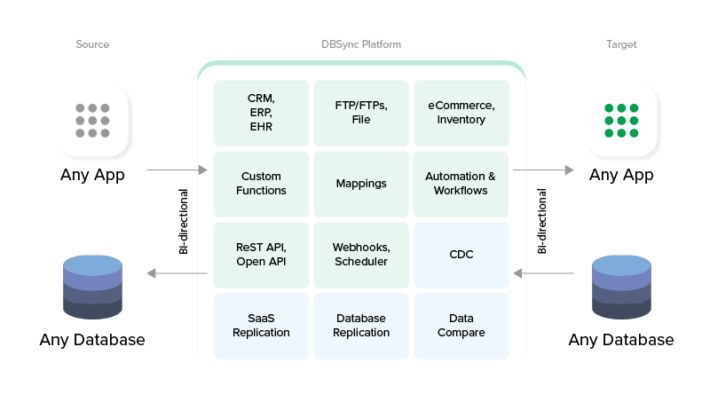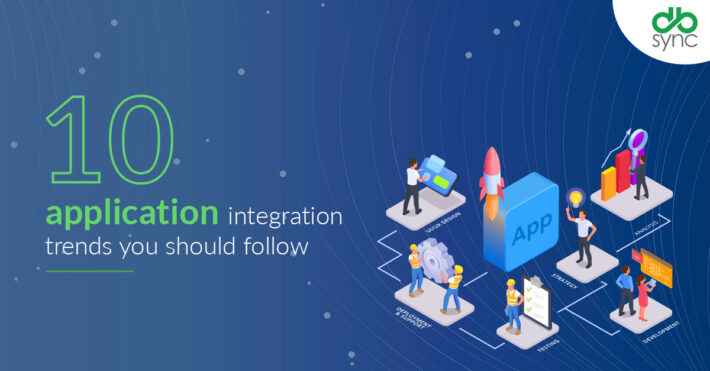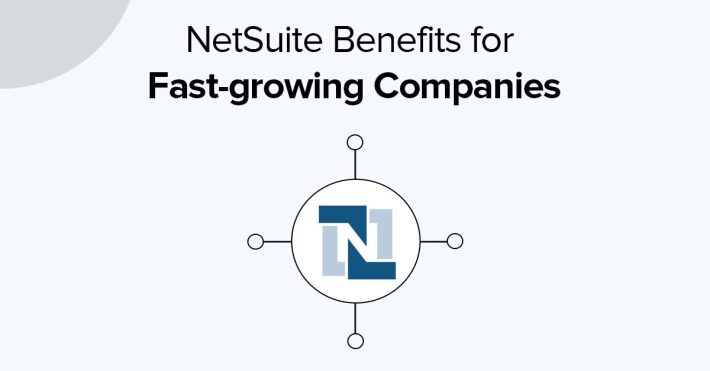Application vs Data Integration: What sets them apart?
In today’s Information & technology industry, Application integration and data integration are two essential elements; these are often used interchangeably. Though both of these are generally cloud based technologies, but have huge differences between the two. On one side, Application integration helps connect different software applications so that they can share data and information, on the other side, data integration combines data from various sources into a single view. In this blog, we will explore application vs data integration and also areas where they can improve the efficiency of the software development process.
Application Integration
- By definition, Application integration is the process of connecting two or more applications so that they can share data and information..
- Application integration aims to keep the applications in sync with each other automatically.
- Integrating applications is important to keep organizations operating efficiently even when the number of applications used within an organization grows.For example, in the past 10 years, the average number of applications used by companies has increased 50 to 100 times.One of the reason for spike is application usage is due to the emergence of specialized applications built for certain project needs and the ease of online application purchase.
- Integrating applications allow users to not have to work with multiple applications at the same time or jump between multiple applications.
- Application integration best practices can be used to overcome the challenge of how applications can work together and has several benefits for an organization as mentioned below.
Streamlined Business Processes:
When several processes are spread across departments and rely on information to be manually extracted, it slows down the time it takes for the organization to react to changes or to innovate on new products or service offerings. If the organization relies on manual processes, i.e. humans, to transfer information between applications, it always requires change management to happen in order to either change how these processes are run or to find new areas where these human resources can be best utilized. In this scenario, Integrating applications using automation would help immensely. Selecting the right integration tools to create application integrations also reduces the time it takes to react.
Unified Data and Improved Data Visibility.
Nowadays, every organization wants to have a holistic view of organization data , 360 degree view of customers and how the business is performing. By integrating the applications, we can be able to bring the information visible in the way that is best suited for our organization.
Ease day to day work with Automated workflows:
Through application integration, we can automate many of the tasks that have previously required humans to either use multiple applications, copy-paste information between applications, or that have simply not been done due to the lack of resources to keep applications up to date. Process automation by integrating applications can help to eliminate repetitive and mundane tasks, which often lower employee satisfaction. The speed of the processes /tasks /workflows can also be significantly increased. Reducing the chances of human errors in the process automation, we’ll have far fewer problems to take care of.
Data Integration
- Data integration is the process of consolidating data from disparate sources into a single dataset with the ultimate goal of providing users with consistent access and delivery of data and to meet the information needs of all applications and business processes. Also it’s the process of merging data from several sources and formats into a single data set.
- The data integration process is one of the main components in the overall data management process. Data integration architects develop data integration software programs and data integration platforms that facilitate an automated data integration process for connecting and routing data from source systems to target systems.
- Data integration is not just transferring data from one database to another; it also involves improving the usability of the data. Data integration combines structured and unstructured data from various sources to produce new, useful data sets. As a result, your analytics capabilities are improved, allowing you to comprehend business processes and spot fresh prospects for innovation.
- Data Integration is important because it helps in increasing Data Accessibility, Improving Data integrity and helps the leaders in taking meaningful decisions.
- Customer data integration provides business managers and data analysts with a complete picture of key performance indicators (KPIs), financial risks, customers, manufacturing and supply chain operations, regulatory compliance efforts, and other aspects of business processes
- Data integration also plays an important role in the healthcare industry. Integrated data from different patient records and clinics helps doctors in diagnosing medical conditions and diseases by organizing data from different systems into a unified view of useful information from which useful insights can be made.
There are several Data integration techniques available, those ‘are:
- ETL [Extract, Transform and Load]: This technique copies datasets from disparate sources, conditions and harmonizes the data and finally loads into a data warehouse or database.
- ELT [Extract, Load and Transform]: In this technique the data is loaded as is into a big data system and transformed at a later time for particular analytics uses
- CDC [Change Data Capture]: This technique identifies data changes in databases in real-time and applies them to a data warehouse
- Data Replication: data in one database is replicated to other databases to keep the information synchronized to operational uses and for backup
- Data Virtualization: data from different systems are virtually combined to create a unified view rather than loading data into a new repository.
Application vs Data integration: What separates them?
| Application Integration | Data Integration |
| Using Application integration, data can be transferred between various applications, one at a time; one process might use a specific application as a source, while another might use it as a destination. | In Data integration, data flows from different sources to a data warehouse/database/ datamart; its one directional flow. |
| We need to have complete understanding of the business and application logic in order to integrate applications | We just need Data source & target details to perform data integration. |
| Here the schemas used are fixed, hence data pulled from one application should be transformed/processed before it can be used in a second application. | Here the schemas used are dynamic, hence no need for any process/transformation before loading. Raw data is stored first & based on the business unit’s need transformation logics applied. |
To conclude, Application integration links real-time data from several sources, whereas Data integration combines various data sources into a single repository. Whether it be user-friendliness and adaptability or thorough data management, each process has a unique set of advantages. The choice between application integration and data integration will depend on business needs. Both offer automation with artificial intelligence and predictive analytics to help the business grow. Both have their purpose defined and enable improved data management for the end users. Each of them is suitable for a unique purpose. Data integration operates at the database level, whereas application integration deals with data at the application level. So, the choice between Data Integration vs Application Integration will be based on your business’s unique requirements. We need to thoroughly evaluate these requirements before making the final call.
We would be delighted to discuss your use case and explore how DBSync can support your success. Please feel free to Schedule a meeting with us.



